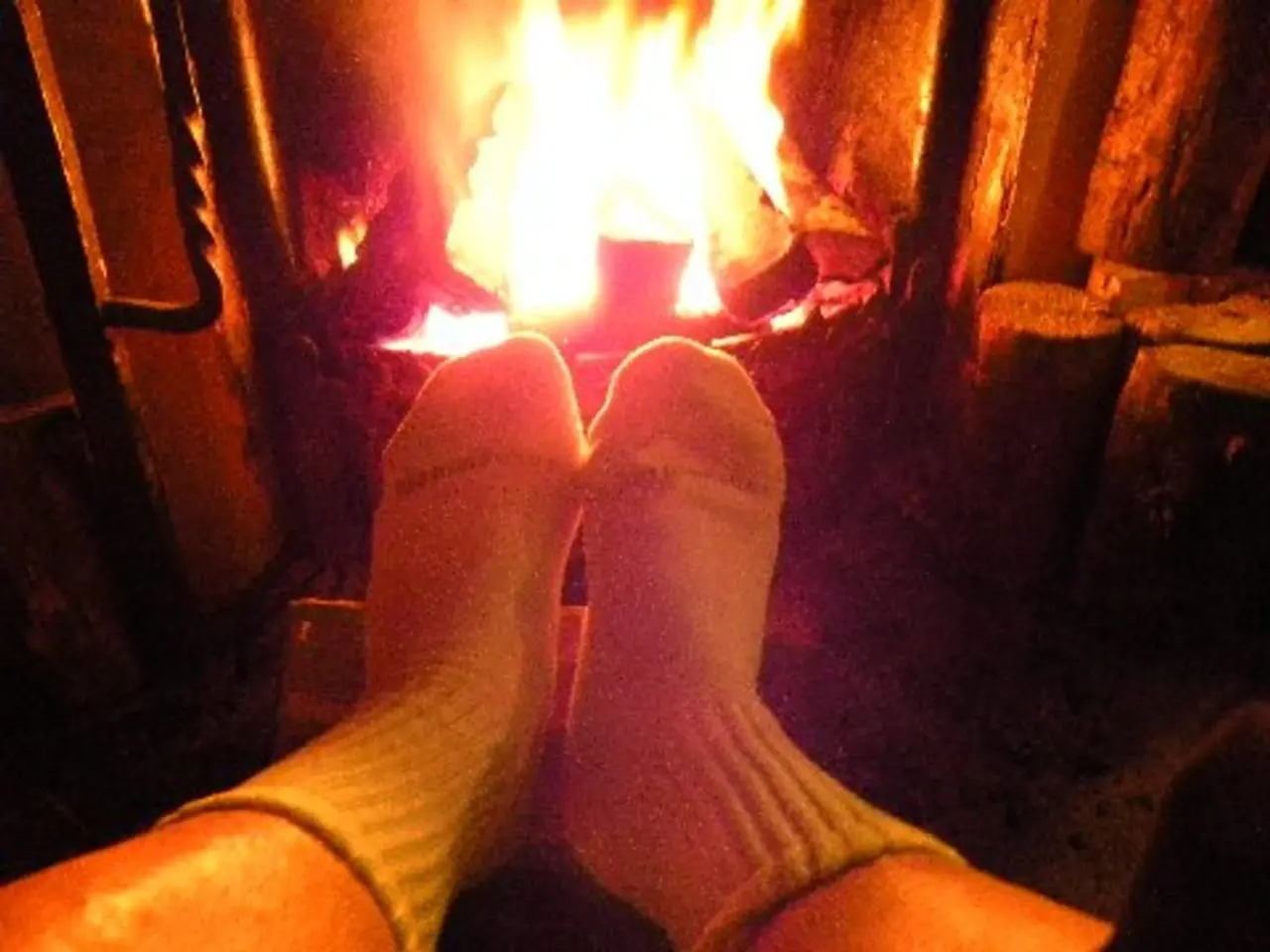Guide for Burn Treatment: Crucial Procedures and Nursing Care
Burns, a common household injury, can range from mild sunburns to severe, life-threatening incidents. Understanding the different types of burns, their symptoms, and appropriate first aid measures is essential for maintaining safety in the kitchen and reducing the risk of accidents.
First-Degree Burns
A typical instance of a first-degree burn is a mild sunburn, characterised by redness, swelling, and discomfort. Common treatments for first-degree burns include over-the-counter pain relief medications, moisturizing lotions, and cool compresses.
Traditional remedies across various cultures often involve natural plant-based substances known for their soothing, anti-inflammatory, and healing properties. Aloe vera gel, calendula flower extracts, herbal oils, and plant-based poultices are commonly used to aid healing and pain relief.
Second-Degree Burns
Second-degree burns affect both the epidermis and a portion of the dermis, the deeper layer of skin. These burns are characterised by intense pain, pronounced redness, and blistering. Treatment for second-degree burns often involves keeping the burn area clean and properly dressed, using sterile dressings and applying topical antibiotics.
Preventing Burns in the Kitchen
In the kitchen, simple strategies for preventing burns include keeping pot handles turned inward, using oven mitts, and maintaining a child-free zone around cooking areas. Fostering a culture of safety within the kitchen can significantly reduce accidents, empowering individuals and families to take proactive steps toward preventing kitchen-related injuries.
Special Considerations
Certain demographics, such as children, the elderly, individuals with pre-existing medical conditions, pregnant women, and those with chemical and electrical burns, require special consideration in burn treatment. Treatment approaches should be gentle and tailored, taking into account their unique needs and sensitivities.
Fire Safety and Prevention
Fire safety is a critical aspect of burn prevention. Essential precautions include installing smoke detectors, conducting regular fire drills, and keeping flammable materials away from heat sources. Educating families about fire safety should include discussions about potential hazards, emphasising the importance of preparedness.
Community Initiatives
Global health initiatives often promote sun safety education to raise awareness and encourage protective behaviours within communities. Similarly, community awareness campaigns can educate individuals about the potential hazards associated with chemicals and electrical equipment, emphasising essential safety protocols to prevent accidents.
Community cooking classes can serve as excellent platforms to educate individuals on kitchen safety, promoting awareness and preventing injuries through shared knowledge and practical demonstrations.
In emergencies, having thorough knowledge of the substance involved in chemical burns can inform critical treatment decisions. Healthcare providers must be equipped with the knowledge and training necessary to effectively address these unique injuries. Training programmes for first responders can ensure they are prepared to handle chemical and electrical burns, ultimately improving patient outcomes and fostering safer communities.
Psychological Support
Psychological support, such as counselling or joining support groups, can be incredibly beneficial for individuals coping with the emotional scars left by their injuries. Involving children in fire safety drills can instil awareness and responsibility from an early age, equipping them with the knowledge necessary to respond effectively in emergencies.
[1] World Health Organization. (2018). Burns. [online] Available at: https://www.who.int/news-room/fact-sheets/detail/burns [Accessed 26 Mar. 2023].
[2] National Institute of Health. (2019). Moxibustion. [online] Available at: https://www.nccih.nih.gov/health/moxibustion [Accessed 26 Mar. 2023].
[3] American Burn Association. (2021). Burn Care. [online] Available at: https://ameriburn.org/education/burn-care/ [Accessed 26 Mar. 2023].
[4] National Health Service. (2020). First aid for burns. [online] Available at: https://www.nhs.uk/live-well/healthy-body/first-aid-for-burns/ [Accessed 26 Mar. 2023].
First-degree burns, such as sunburns, are often treatable with over-the-counter pain relief medications, moisturizing lotions, and cool compresses. Community initiatives encourage sun safety education, emphasizing the importance of appropriate protection and reducing risks.
In a kitchen setting, strategies like keeping pot handles turned inward, using oven mitts, and maintaining a child-free zone can help prevent burns. Greater focus on fire safety, including installing smoke detectors and conducting regular fire drills, is essential to minimize burn accidents.
Traditional remedies use natural plant-based substances like aloe vera gel, calendula flower extracts, herbal oils, and plant-based poultices to aid healing and provide pain relief for first-degree burns. However, second-degree burns, which affect both the epidermis and the dermis, require different treatments. These include keeping the burn area clean, using sterile dressings, and applying topical antibiotics.
The groups particularly at risk for severe burns include children, the elderly, individuals with pre-existing medical conditions, pregnant women, and those with chemical or electrical burns. Treatment should be tailored according to their unique needs and sensitivities.
Healthcare providers and first responders must be equipped with the knowledge and training necessary to address chemical and electrical burns effectively. This can lead to improved patient outcomes and foster safer communities.
Psychological support, such as counselling or joining support groups, can aid in the emotional recovery process for those dealing with burn-related trauma. Involving children in fire safety awareness campaigns from an early age can teach them essential safety protocols to respond effectively in emergencies.
First aid knowledge is crucial for treating burn injuries promptly. Resources such as the World Health Organization, National Institute of Health, American Burn Association, and National Health Service provide information on burn care, first aid measures, and prevention strategies (1-4).




